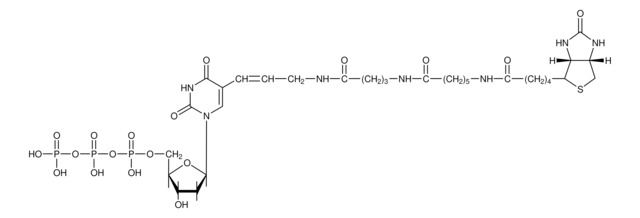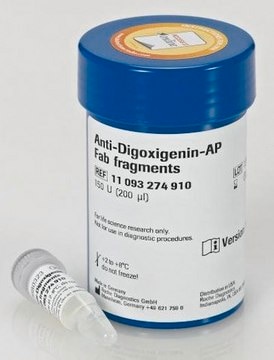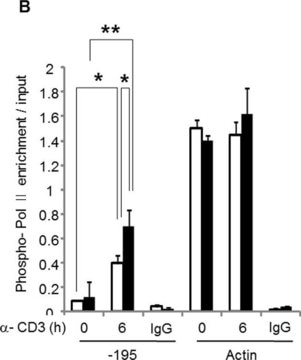11427598910
Roche
Biotin-16-ddUTP
≥98% (HPLC), solution, 1 mM, suitable for hybridization
Synonym(s):
Bio-16-ddUTP tetralithium salt, 5-(N-[N-Biotinyl-ε-aminocaproyl-γ-aminobutyryl]-3-aminoallyl)-2′,3′-dideoxyuridine 5′-triphosphate
About This Item
Recommended Products
Quality Level
assay
≥98% (HPLC)
form
solution
mol wt
955.5 (biotin-16-ddUTP-Li4)
packaging
pkg of 25 μL (25 nmol; 1mM)
manufacturer/tradename
Roche
concentration
1 mM
technique(s)
hybridization: suitable
storage temp.
−20°C
Looking for similar products? Visit Product Comparison Guide
Related Categories
General description
Application
- Biotin-16-ddUTP is used as a substrate for: Terminal Transferase
- DNA polymerase I (Holoenzyme and Klenow fragment)
- T4 DNA polymerase
- Taq DNA polymerase and reverse transcriptase (e.g.,Transcriptor).
- The biotin-labeled oligonucleotide can be used as a hybridization probe for: DNA and RNA transfers
- Colony and plaque screening
- In situ hybridization
The labeled oligomer can be subsequently detected by ELISA using the Streptavidin-AP conjugate for nucleic acid detection.
Oligonucleotides are enzymatically labeled at their 3′ end with Terminal Transferase by incorporation of a single biotin-labeled dideoxyuridine- triphosphate (biotin-ddUTP).
It has been used in the biotinylation of in vitro transcribed tmRNA during surface plasmon resonance (SPR) technique. It has been used in the standard nick translation reaction for tumor DNA labelling during comparative genomic hybridization.
Features and Benefits
Quality
Other Notes
Storage Class
12 - Non Combustible Liquids
wgk_germany
nwg
flash_point_f
does not flash
flash_point_c
does not flash
Certificates of Analysis (COA)
Search for Certificates of Analysis (COA) by entering the products Lot/Batch Number. Lot and Batch Numbers can be found on a product’s label following the words ‘Lot’ or ‘Batch’.
Already Own This Product?
Find documentation for the products that you have recently purchased in the Document Library.
Customers Also Viewed
Our team of scientists has experience in all areas of research including Life Science, Material Science, Chemical Synthesis, Chromatography, Analytical and many others.
Contact Technical Service



